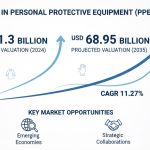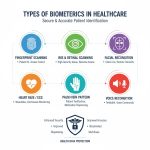Global Animal Feed Additives Market to Double from USD 50.05 Billion in 2024 to USD 105.22 Billion by 2035 | VMR Reports 7.00% CAGR
The global Animal Feed Additives Market is set for remarkable growth as the livestock sector intensifies production amid rising demand for high-quality protein and stricter antibiotic regulations. Vantage Market Research reports a valuation of USD 50.05 billion in 2024, with expectations to reach USD 105.22 billion by 2035, reflecting a CAGR of 7.00% over the 2025–2035 period. This trend underscores the pivotal role of feed additives—such as amino acids, vitamins, enzymes, and acidifiers—in supporting animal health and production efficiency across livestock segments.
Our comprehensive Animal Feed Additives Market report is ready with the latest trends, growth opportunities, and strategic analysis. View Sample Report PDF.
Key Takeaways
- Market Revenue: USD 50.05 billion in 2024, projected to reach USD 105.22 billion by 2035 at a 7.00% CAGR (2025–2035).
- Segmentation: Includes By Product, By Livestock, and By Region.
- Largest & Fastest-growing Region: Asia Pacific leads in both size and growth.
- Recent Development: In August 2024, Nutreco launched a digital feed-formulation platform that uses real-time farm data for personalized additive recommendations.
Premium Insights
According to Vantage Market Research, the Animal Feed Additives Market achieved USD 50.05 billion in revenue during 2024 and is expected to more than double to USD 105.22 billion by 2035, at a robust 7.00% CAGR (2025–2035). The study segments the market by Product (e.g., antibiotics, vitamins, antioxidants, amino acids, enzymes, acidifiers), Livestock (poultry, swine, cattle, aquaculture, others), and Region (North America, Europe, Asia Pacific, Latin America, Middle East & Africa).
Global meat, dairy, and aquaculture consumption continues to rise, prompting greater reliance on feed additives to enhance animal growth, immunity, and feed efficiency. The industry is seeing a shift toward sustainable and antibiotic-free formulations, such as enzymes, acids, and natural antioxidants, boosting technological innovation. Additionally, growth in aquaculture demand is spurring tailored additive development for fish and shrimp nutrition.
Market Size & Forecast
- 2024 Market Size: USD 50.05 billion
- 2035 Forecast: USD 105.22 billion
- CAGR (2025–2035): 7.00%
The market shows moderate consolidation. Vantage highlights a diverse segment structure featuring large multinational producers and regional specialists. According to Future Market Insights, multinational entities such as Cargill, BASF, and DSM capture approximately 55% market share, regional leaders another 30%, while niche providers account for the remaining 15%, emphasizing market diversity and the space available for innovation.
For Animal Feed Additives Market Research Report and updates detailed: View Full Report Now!
Product Insights
The market by product covers amino acids, vitamins, enzymes, antioxidants, antibiotics, minerals, and acidifiers. Amino acids dominate due to their critical role in improving animal health and growth performance. Enzymes are gaining traction as they enhance nutrient absorption and feed efficiency, reducing costs for farmers. With rising concerns over antibiotic resistance, natural alternatives like probiotics and organic acids are witnessing strong demand. Innovations in specialty feed additives further support efficiency, sustainability, and higher productivity in livestock farming.
Livestock Insights
This segment includes poultry, swine, ruminants, aquaculture, and others. Poultry remains the largest consumer due to increasing global demand for chicken meat and eggs, driving extensive use of feed additives. Swine feed additives focus on improving gut health and growth rates, especially in Asian markets. Ruminants rely on additives to enhance milk production and meat quality. Aquaculture feed additives are rapidly growing, fueled by rising seafood consumption and sustainability needs. Customized solutions for specific livestock species are becoming key trends.
Regional Insights
North America in Animal Feed Additives Market Trends
North America dominates the cold chain market due to advanced infrastructure, strong regulations on food and pharmaceutical safety, and high demand for processed and frozen foods. The U.S. leads with significant investments in temperature-controlled warehouses and transport solutions, while Canada contributes with growing pharmaceutical distribution. Increasing adoption of automation, IoT-based monitoring, and sustainability practices further boost the market. Additionally, the expansion of e-commerce grocery delivery services enhances the need for robust cold chain logistics across the region.
Europe in Animal Feed Additives Market Trends
Europe holds a strong share in the cold chain market, driven by strict food safety regulations, expanding pharmaceutical distribution, and growing consumption of frozen foods. Countries like Germany, the U.K., and France lead the demand, supported by advanced infrastructure and adoption of sustainable cold chain solutions. The European Union’s Green Deal and focus on reducing carbon emissions have encouraged innovation in energy-efficient cold storage and transportation systems, further strengthening regional market growth.
Asia Pacific in Animal Feed Additives Market Trends
Asia Pacific is the fastest-growing cold chain market, fueled by expanding urbanization, rising disposable incomes, and increasing demand for frozen and packaged food products. China and India lead the growth due to rapid development of cold storage infrastructure and growing pharmaceutical exports. The booming e-commerce sector also boosts last-mile cold chain delivery demand. Government initiatives supporting food security and healthcare logistics further enhance market expansion, making Asia Pacific a key region for future investments.
Latin America in Animal Feed Additives Market Trends
Latin America is witnessing steady growth in the cold chain market, supported by increasing exports of fresh fruits, vegetables, and meat products. Brazil, Mexico, and Argentina are major contributors due to their strong agricultural base and growing pharmaceutical industries. The region faces infrastructure challenges but benefits from rising investments in cold storage facilities and transportation networks. Expanding retail and e-commerce grocery segments are also driving the adoption of modern cold chain systems to reduce post-harvest losses.
Middle East & Africa in Animal Feed Additives Market Trends
The Middle East & Africa cold chain market is developing, driven by growing imports of perishable foods and pharmaceuticals. The UAE and Saudi Arabia lead the market with significant investments in cold storage warehouses and logistics hubs to meet rising food security demands. Africa shows growth potential, particularly in South Africa, supported by increasing agricultural exports. However, challenges such as inadequate infrastructure and high energy costs persist, creating opportunities for modern, energy-efficient cold chain solutions.
Competitive Landscape
According to competitive analysis, the market’s top-tier multinational players include Cargill, BASF, DSM, ADM Animal Nutrition, and Evonik Industries, together holding roughly 55% of the market. Regional leaders such as Nutreco, Zinpro, Novus International, and Kemin Industries control about 30%, while niche brands—including Biomin, Delacon, Bentoli, and Pancosma—comprise the remaining 15%. These companies focus on innovation through enzyme technologies, sustainable additives like algae-derived omega-3s, methane-reducing feeds, and natural growth promoters.
Recent Developments
- In August 2024, Nutreco launched a digital feed-formulation platform integrating real-time farm data to tailor additive recommendations per animal and farm conditions, marking a significant technological leap in precision nutrition.
Animal Feed Additives Market Scope
Vantage Market Research’s latest report on the Animal Feed Additives Market provides an in-depth analysis of the industry dynamics, market opportunities, and competitive landscape. The study covers market size estimates, growth projections, and trends shaping the sector. It evaluates the market by Product, Livestock, and Region, offering valuable insights into demand drivers, regulatory frameworks, and technological innovations. The report also highlights the impact of global trade, sustainability practices, and evolving consumer preferences on the animal nutrition industry.
Market Dynamics
Driver
The growing demand for high-quality animal protein, coupled with rising global meat consumption, is a key driver for the animal feed additives market. Consumers are increasingly focused on food safety, nutritional value, and sustainable farming practices, which has encouraged livestock producers to adopt additives that improve growth, immunity, and feed efficiency. Additionally, the push to reduce antibiotic usage in animal nutrition has increased the adoption of alternatives such as probiotics, enzymes, and amino acids, further fueling market growth.
Restraint
Strict regulatory frameworks and compliance requirements across different regions are a significant restraint for the animal feed additives market. Manufacturers often face long approval timelines and high costs associated with ensuring product safety and efficacy. Furthermore, the rising cost of raw materials such as vitamins and amino acids can hinder profit margins for producers. Unpredictable shifts in global trade, coupled with concerns about overuse of additives in livestock, also limit widespread adoption, particularly in emerging and price-sensitive markets.
Opportunity
Rising awareness about animal health and welfare is creating strong opportunities for feed additive innovation. The shift toward natural and sustainable solutions, including plant-based additives, probiotics, and prebiotics, is gaining traction. Moreover, growing demand for functional additives that enhance meat quality, boost immunity, and reduce greenhouse gas emissions presents new avenues for growth. The expansion of aquaculture and poultry industries in developing economies further adds to the opportunity pool, driving the need for advanced, cost-effective, and customized feed solutions.
Challenge
One of the major challenges facing the animal feed additives market is the volatility in raw material supply and pricing, which directly affects production costs. Additionally, counterfeit and low-quality products in the market pose risks to both producers and consumers, undermining trust. The industry also faces the challenge of balancing performance with sustainability, as additives must meet rising eco-friendly standards without compromising livestock productivity. Furthermore, resistance to adopting advanced feed technologies in certain developing regions slows down market penetration.
Global Animal Feed Additives Market Segmentation
- By Product: Antibiotics; Vitamins; Antioxidants; Amino Acids; Feed Enzymes; Feed Acidifiers; Others
- By Livestock: Pork/Swine; Poultry; Cattle; Aquaculture; Other Livestock
- By Region: North America; Europe; Asia Pacific; Latin America; Middle East & Africa
Frequently Asked Questions
- What was the Animal Feed Additives market size in 2024?
USD 50.05 billion.
- What is the 2035 projected size and CAGR (2025–2035)?
USD 105.22 billion, with a 7.00% CAGR.
- Which region is largest and fastest-growing?
Asia Pacific leads in both size and growth.
- How is the market segmented in the Vantage report?
By Product, Livestock, and Region.
- Who are the key players?
Leading multinationals include Cargill, BASF, DSM, ADM, Evonik, regional players like Nutreco, Zinpro, Novus, Kemin, and niche brands such as Biomin, Delacon, etc.
- Any recent notable innovations?
Yes—Nutreco’s digital feed formulation platform launch in August 2024 enabled real-time personalized additive recommendations
![[Market Research Reports] – Research Google News Blog | VMR.Biz](https://www.vmr.biz/wp-content/uploads/2022/12/logo-removebg-preview.png)











